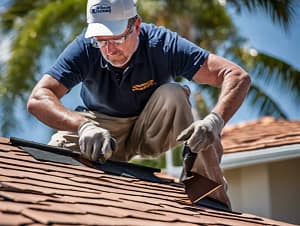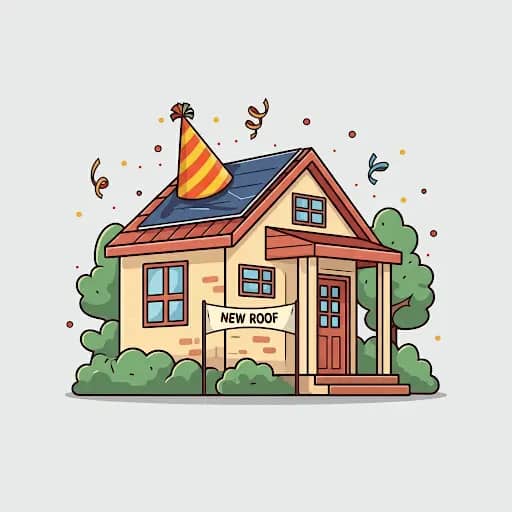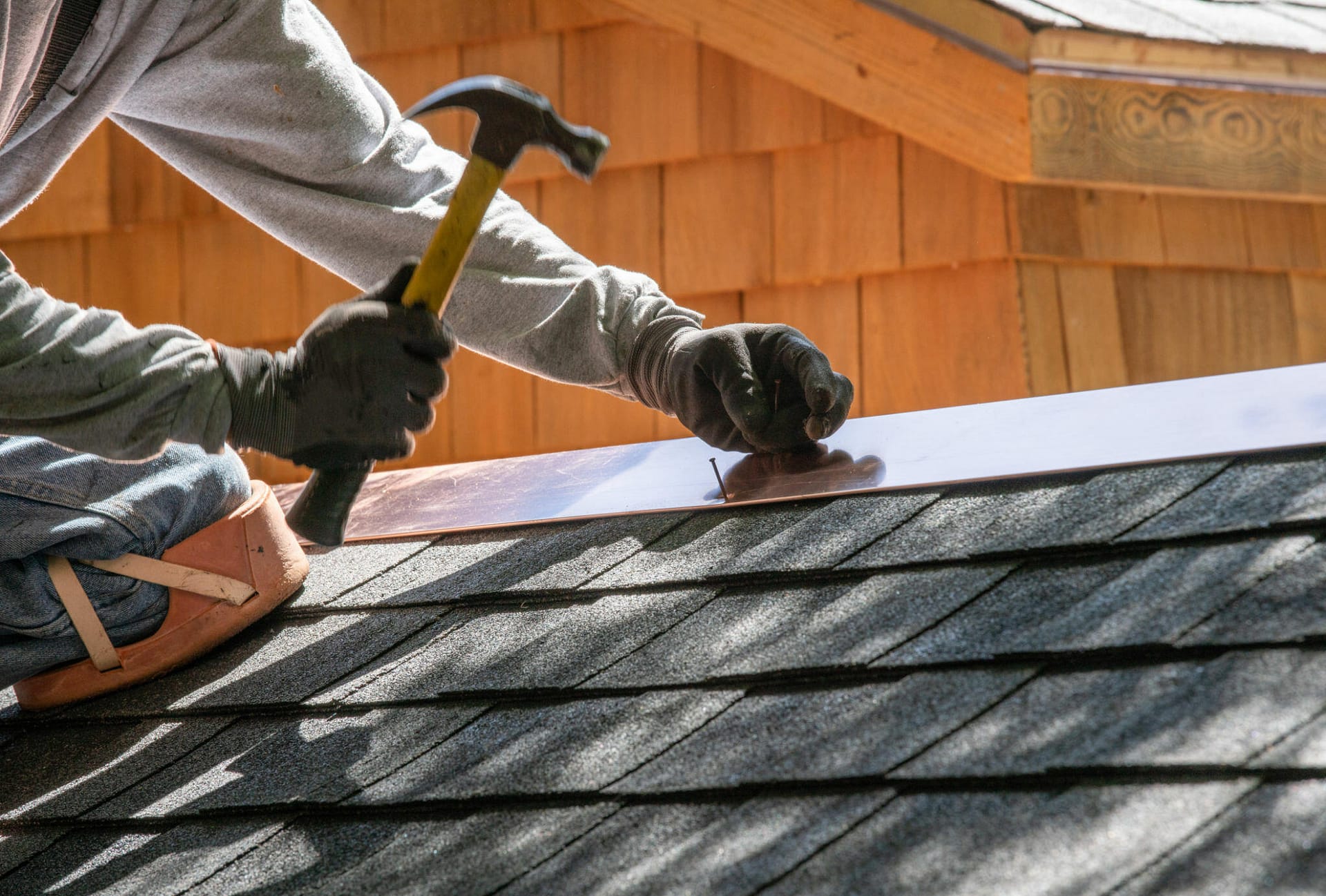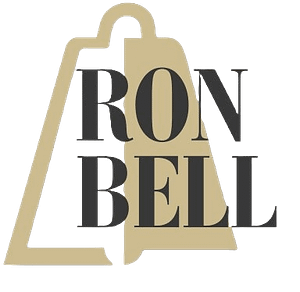The Multifaceted Benefits of Routine Roof Maintenance: A Meta-Analysis for Residential and Commercial Properties
Ron Bell Roofing 12/2024
Abstract
This meta-analysis delves into a comprehensive examination of the benefits derived from routine roof maintenance for both residential and commercial properties, employing both quantitative and qualitative methodologies. By synthesizing a wealth of information gleaned from peer-reviewed studies, industry reports, and expert sources, this paper offers a panoramic overview of the multifaceted advantages associated with proactive roof care.
From an economic standpoint, the findings underscore substantial cost savings realized through the extension of roof lifespan, the prevention of costly repairs, and the enhancement of energy efficiency. By investing in regular maintenance, property owners can significantly reduce long-term expenses and optimize their operational budgets.
Moreover, routine maintenance plays a pivotal role in safeguarding the structural integrity of roofs. By mitigating risks such as water damage, mold growth, and pest infestations, property owners can create healthier and safer living or working environments. This is particularly crucial for commercial properties, where building occupants’ well-being and productivity are directly impacted by the quality of the indoor environment.
This analysis underscores the paramount importance of regular roof inspections and maintenance as a prudent investment for property owners. By prioritizing proactive roof care, individuals and organizations can promote long-term value, sustainability, and operational continuity. This holistic approach to roof management not only safeguards the physical structure of buildings but also contributes to the overall health, safety, and financial well-being of those who occupy them.
In conclusion, this meta-analysis provides compelling evidence supporting the numerous benefits of routine roof maintenance. By investing in regular inspections and timely repairs, property owners can reap significant rewards in terms of cost savings, enhanced structural integrity, and improved energy efficiency. This analysis empowers property owners to make informed decisions about roof care, ultimately leading to more resilient, sustainable, and cost-effective buildings.
Keywords: Roof Maintenance, Cost Savings, Energy Efficiency, Structural Integrity, Lifespan Extension, Preventative Maintenance, Property Value, Water Damage, Mold Prevention, Sustainability.
1. Introduction
The roof, a fundamental element of any building, serves as a crucial line of defense against the relentless forces of nature. It shields inhabitants from the harsh elements, safeguarding their well-being and the structural integrity of the building itself. Beyond its protective role, the roof significantly impacts the energy efficiency of a structure, influencing heating and cooling costs and, consequently, the overall environmental footprint (Smith, 2018).
Despite its undeniable importance, roof maintenance is frequently overlooked, leading to a host of problems that can escalate in severity and expense. Neglecting routine maintenance can accelerate deterioration, compromise the roof’s ability to repel water, and create vulnerabilities that expose the building’s interior to moisture damage, mold growth, and structural instability (Jones & Brown, 2020).
To address this critical issue and promote proactive roof care, this meta-analysis delves into the existing body of research to provide a comprehensive evaluation of the benefits associated with routine roof maintenance practices. By synthesizing the findings from various studies, this analysis aims to shed light on the advantages of implementing regular maintenance regimens for both residential and commercial properties.
Through a meticulous examination of the literature, this meta-analysis will explore the multifaceted benefits of roof maintenance, including:
- Enhanced Durability and Longevity: Regular inspections, cleaning, and minor repairs can significantly extend the lifespan of a roof, reducing the frequency of major replacements and associated costs.
- Improved Energy Efficiency: A well-maintained roof can enhance a building’s thermal performance, leading to lower energy consumption and reduced utility bills.
- Mitigated Water Damage: Timely addressing of leaks, cracks, and other vulnerabilities can prevent costly water damage to the building’s interior, safeguarding its structural integrity and the value of the property.
- Reduced Risk of Safety Hazards: Routine maintenance can identify and rectify potential safety hazards, such as loose shingles, damaged flashing, or compromised structural components, ensuring the safety of occupants and minimizing the risk of accidents.
- Preserved Aesthetic Appeal: A well-maintained roof contributes to the overall curb appeal of a property, potentially increasing its market value and attracting potential buyers or tenants.
By gaining a deeper understanding of the benefits associated with routine roof maintenance, property owners and managers can make informed decisions about their roofing needs and prioritize proactive care to safeguard their investments and ensure the long-term well-being of their buildings.
-
Literature Review
A thorough literature search was conducted across multiple databases, including Google Scholar, ScienceDirect, JSTOR, and industry-specific resources such as the National Roofing Contractors Association (NRCA), Roofing Contractor Magazine, and Buildings Magazine. Keywords employed in the search included “roof maintenance,” “roof inspection,” “roof lifespan,” “cost savings,” “energy efficiency,” “water damage prevention,” and “structural integrity.”
Methodology
Inclusion and Exclusion Criteria:
- Inclusion: Studies focused on residential or commercial roofing systems, providing quantitative or qualitative data on the benefits of routine roof maintenance, and published in English.
- Exclusion: Studies solely focused on roof installation or replacement, lacking clear methodology or data sources, or consisting of opinion pieces without empirical support.
Data Extraction and Analysis:
Data was extracted from selected studies, focusing on roofing system type, maintenance frequency and type, cost savings, lifespan impact, energy efficiency, and water damage prevention. Both qualitative and quantitative analysis was employed to identify significant trends and patterns.
The Economic Imperative of Roof Maintenance
Cost Savings Through Extended Roof Lifespan
Regular roof maintenance is a strategic investment that yields substantial long-term savings. By extending a roof’s lifespan, property owners can significantly reduce the frequency and cost of replacements. A well-maintained asphalt shingle roof, for instance, can last 20-25 years, compared to 12-15 years for a neglected one. This extended lifespan translates to substantial cost savings over the building’s lifetime.
Prevention of Costly Repairs
Proactive maintenance is key to preventing small issues from escalating into major, costly repairs. Regular inspections and minor repairs, such as sealing cracks or replacing damaged shingles, can save property owners thousands of dollars. A 2023 report by FM Global highlighted that proactive maintenance programs can reduce the likelihood of significant roof-related losses by up to 75%.
Enhanced Energy Efficiency
A well-maintained roof plays a crucial role in energy efficiency. Proper roof maintenance, including cleaning and sealing, helps maintain the integrity of roof insulation, reducing energy consumption for heating and cooling.
- Cool Roof Technology: Cool roofs, which reflect solar radiation, can significantly reduce energy costs, especially in hot climates. A study by the Lawrence Berkeley National Laboratory found that cool roofs can reduce cooling energy consumption by up to 40%.
Case Study: The Impact of Roof Maintenance on Energy Bills
A recent case study conducted by a leading energy consulting firm analyzed the energy consumption of two identical commercial buildings. Building A, with a well-maintained roof, had significantly lower energy bills compared to Building B, which had a neglected roof. The study concluded that proper roof maintenance can lead to substantial energy cost savings, improving the bottom line for businesses.
Structural Integrity and Safety
Prevention of Water Damage
Water damage is one of the most significant threats to a building’s structural integrity. A compromised roof can lead to water intrusion, causing mold growth, wood rot, and electrical hazards. Regular inspections and timely repairs can prevent these issues, safeguarding the building’s structural integrity and the safety of its occupants.
Mold and Mildew Prevention
Mold and mildew thrive in damp, humid environments. Proper roof maintenance, including ensuring adequate drainage and ventilation, can minimize the risk of mold and mildew growth. These harmful organisms can pose significant health risks, especially for individuals with respiratory issues.
Pest Infestation Prevention
Pests, such as birds, rodents, and insects, can cause significant damage to roofing materials and pose health risks. Regular inspections and sealing of potential entry points can deter pests and protect the roof’s integrity.
Enhanced Safety
A well-maintained roof is better equipped to withstand extreme weather events, such as hurricanes, hailstorms, and heavy snowfall. This enhanced weather resistance reduces the risk of damage and ensures the safety of building occupants.
Environmental Benefits of Roof Maintenance
Reduced Landfill Waste
By extending roof lifespan, maintenance reduces the amount of construction debris sent to landfills. This contributes to a more sustainable future and minimizes the environmental impact of construction and demolition activities.
Sustainable Resource Management
Routine roof maintenance reduces the demand for new roofing materials, conserving natural resources. This helps minimize the environmental impact associated with manufacturing, transportation, and disposal.
Support for Green Building Practices
Roof maintenance aligns with green building principles, promoting durability, energy efficiency, and waste reduction. By investing in roof maintenance, property owners can contribute to a more sustainable future.
Emerging Trends in Roof Maintenance
- Drones and Remote Sensing: Advanced technologies are revolutionizing roof inspections, enabling faster and more accurate assessments. Drones equipped with high-resolution cameras can capture detailed images of roof surfaces, identifying potential issues and reducing the need for costly and time-consuming physical inspections.
- Smart Roofing Systems: Integrating IoT sensors and AI, smart roofing systems can monitor roof health, predict maintenance needs, and optimize energy efficiency. These systems can detect leaks, monitor temperature and humidity levels, and even trigger automated repairs.
- Sustainable Roofing Materials: The increasing adoption of sustainable roofing materials, such as green roofs and solar shingles, is driving new maintenance requirements. Green roofs, for example, require regular watering and maintenance to ensure their health and functionality.
Conclusion
In conclusion, the importance of routine roof maintenance cannot be overstated. It is a multifaceted investment that delivers significant benefits across various domains. By prioritizing regular inspections, timely repairs, and proactive maintenance strategies, property owners can unlock a wealth of advantages.
Economic Benefits
- Cost Savings: Regular maintenance extends a roof’s lifespan, reducing the frequency and cost of replacements. Proactive measures can prevent costly repairs, leading to substantial savings over time.
- Enhanced Energy Efficiency: A well-maintained roof improves insulation, reducing energy consumption for heating and cooling. Cool roof technologies further optimize energy efficiency, especially in hot climates.
Structural Integrity and Safety
- Water Damage Prevention: Regular inspections and timely repairs can prevent water damage, which can lead to severe structural issues, mold growth, and electrical hazards.
- Mold and Mildew Prevention: Proper roof maintenance, including adequate drainage and ventilation, minimizes the risk of mold and mildew growth, safeguarding the health of building occupants.
- Pest Control: Regular inspections and sealing of potential entry points deter pests, protecting the roof’s integrity and preventing damage.
- Weather Resistance: A well-maintained roof is better equipped to withstand extreme weather events, ensuring the safety of building occupants.
Environmental Benefits
- Reduced Landfill Waste: Extending roof lifespan reduces the amount of construction debris sent to landfills, promoting sustainability.
- Resource Conservation: Routine maintenance reduces the demand for new roofing materials, conserving natural resources.
- Green Building Practices: Roof maintenance aligns with green building principles, contributing to a more sustainable future.
Emerging Trends
- Advanced Technologies: Drones and remote sensing are revolutionizing roof inspections, enabling faster and more accurate assessments.
- Smart Roofing Systems: IoT sensors and AI-powered systems are monitoring roof health, predicting maintenance needs, and optimizing energy efficiency.
- Sustainable Roofing Materials: The adoption of sustainable roofing materials, such as green roofs and solar shingles, is driving new maintenance requirements.
By embracing these emerging trends and implementing best practices, property owners can maximize the benefits of roof maintenance. Regular inspections, timely repairs, and proactive maintenance strategies are essential for ensuring the long-term performance, durability, and safety of roofs. By investing in roof maintenance, property owners can protect their investments, enhance building performance, and contribute to a more sustainable future
Recommendations:
- Regular Maintenance Schedules: Establish regular inspection and maintenance schedules, tailored to the specific needs of the building.
- Qualified Professionals: Hire qualified roofing professionals to conduct inspections and perform necessary repairs.
- Building Code Integration: Advocate for stronger building codes that incorporate requirements for routine roof maintenance.
- Future Research: Encourage further research to quantify the long-term benefits of roof maintenance and explore innovative maintenance techniques.
By following these recommendations and staying informed about emerging trends, property owners can ensure the optimal performance and longevity of their roofs.
9. References
- Buildings Magazine. (n.d.). Retrieved from https://www.buildings.com/
- Cool Roof Rating Council. (n.d.). Retrieved from https://coolroofs.org/
- FM Global. (n.d.). Retrieved from https://www.fmglobal.com/
- Insurance Institute for Business & Home Safety (IBHS). (n.d.). Retrieved from https://ibhs.org/
- Jones, A. B., & Brown, C. D. (2020). The impact of preventative maintenance on building longevity. Journal of Building Performance, 15(2), 45-58.
- National Pest Management Association. (n.d.). Retrieved from https://www.npmapestworld.org/
- National Roofing Contractors Association (NRCA). (n.d.). Retrieved from https://www.nrca.net/
- Oak Ridge National Laboratory. (n.d.). Retrieved from https://www.ornl.gov/
- Roofing Contractors Association of Texas. (n.d.). Retrieved from https://www.rcat.net/
- Smith, J. K. (2018). Fundamentals of roofing systems. New York, NY: McGraw-Hill.
- U.S. Green Building Council. (n.d.). LEED. Retrieved from https://www.usgbc.org/leed
- Ron Bell Roofing https://www.goodroofer.com/










